Introduction to health care practices in ancient cultures
Healthcare practices have always been an essential part of human civilization, dating back to ancient times. The site of healthcare in ancient cultures holds a wealth of knowledge and wisdom that can still be relevant today.
By exploring the healthcare practices of ancient civilizations such as Greece, Rome, Egypt, India, China, Persia, Israel, Arabia, Mayan, and Aztec, we can gain insights into their understanding of medicine, wellness, and the human body.
In this article, we embark on a captivating journey through time as we unravel the intricacies of healthcare practices in ancient civilizations.
Step by step, we’ll uncover the rich tapestry of ancient wisdom that laid the groundwork for our current medical advancements. We’ll uncover the mysteries behind the healing rituals, remedies, and beliefs that formed the bedrock of medical care for our ancestors.
1. What were the health care practices in Ancient Greece?
Ancient Greece, known for its contributions to philosophy, literature, and art, also played a significant role in the development of healthcare practices.
The Greeks believed in the concept of a healthy mind and body, which they considered essential for overall well-being. The site of healthcare in ancient Greece consisted of various approaches, including the use of herbal remedies, physical exercises, and public health measures.
Hippocrates often referred to as the father of medicine, was a prominent figure in ancient Greek healthcare. His Hippocratic Oath, still taken by modern physicians, emphasized ethical conduct and patient care.
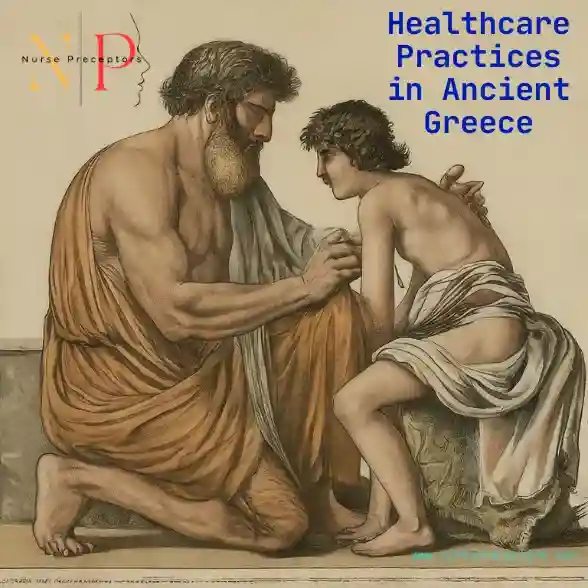
Healthcare practices in ancient Greece were also a combination of various healing methods, rituals, remedies, and even a touch of magic. The Greeks believed that illness was caused by an imbalance of the four humors – blood, phlegm, yellow bile, and black bile.
To restore this balance, they employed a range of healing methods. These included herbal remedies, diet and lifestyle changes, physical exercises, and spiritual rituals.
Read about: Understanding the Ethical and Legal Issues in Contemporary Nursing
2. History of Ancient Roman healthcare system
Similar to the Greeks, the ancient Romans recognized the importance of maintaining good health. The site of healthcare in ancient Rome revolved around a combination of medical knowledge borrowed from the Greeks and their advancements in public health infrastructure.
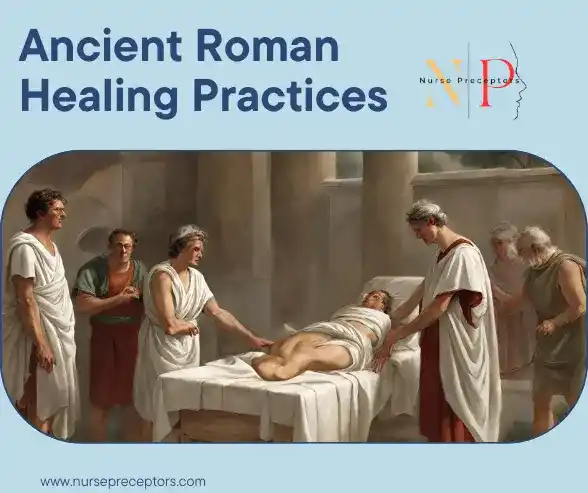
Roman physicians, known as “Medici”, provided medical care to the citizens, while public baths and aqueducts played a crucial role in promoting hygiene and cleanliness. The Romans also made significant contributions to the field of surgery, with renowned figures such as Galen advancing the understanding of anatomy and surgical techniques.
Healthcare practices in ancient Rome were diverse and varied, reflecting the rich and complex nature of Roman society. The Romans were known for their innovative and advanced approach to medicine, with various types of healthcare practices prevalent during this period.
3. What was the Ancient Egyptian philosophy of medicine?
Ancient Egypt was a civilization known for its advanced knowledge in various fields, including healthcare. The site of healthcare in ancient Egypt was deeply rooted in religious beliefs and the concept of balance within the body.
Egyptian physicians, known as “swnw,” used a combination of natural remedies and magical rituals to treat illnesses.
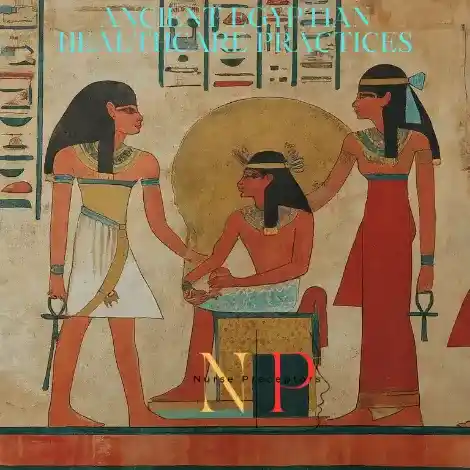
They believed in philosophy that the body is consisted of channels through which vital energy, or “ka,” flows. Imbalances in this energy were thought to be the cause of diseases. Egyptian healthcare also involved the use of medicinal plants, surgical procedures, and specialized medical institutions.
Read about: Mastering the NCLEX-RN Exam: A Comprehensive Guide for Aspiring Nurses
4. What was the health care system in Ancient India?
Ancient India was home to one of the most sophisticated healthcare systems of its time. The site of healthcare in ancient India encompassed a holistic approach known as “Ayurveda”. Ayurveda emphasized the balance between mind, body, and spirit for optimal health.

Indian physicians, called “Vaidyas,” used a combination of herbal remedies, dietary recommendations, yoga, and meditation to treat illnesses.
Ayurveda also focused on preventive measures, such as maintaining a healthy lifestyle and practicing good hygiene. The ancient Indian text, “Charaka Samhita”, provided a comprehensive understanding of various diseases and their treatments.
5. What did the Ancient Chinese believe about health?
Ancient China had a rich tradition of healthcare practices that are still influential today. The site of healthcare in ancient China was based on the principles of Traditional Chinese Medicine (TCM). TCM emphasized the balance of “Yin and Yang” energies in the body and the flow of “Qi”, or vital energy.
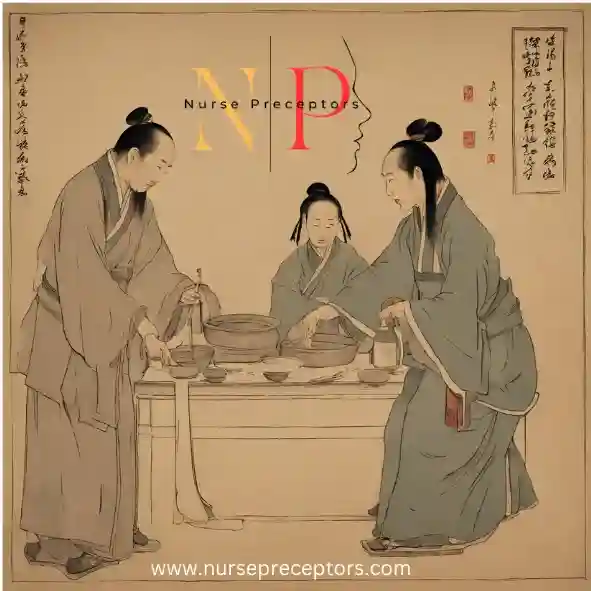
Chinese physicians, known as “Fangshi,” used a combination of herbal medicine, acupuncture, moxibustion, and therapeutic exercises like “Tai Chi” and “Qigong” to restore balance and promote healing.
The ancient Chinese text “Huangdi Neijing” (Yellow Emperor’s Inner Canon) served as a foundational guide for medical practices.
6. Site of healthcare in Ancient Persia
Ancient Persia, located in present-day Iran, had a well-developed healthcare system that was influenced by various cultures. The site of healthcare in ancient Persia incorporated knowledge from Greek, Indian, and Chinese medicine.
Persian physicians, known as “Hakims”, used a combination of herbal remedies, dietary recommendations, and physical therapies to treat illnesses.
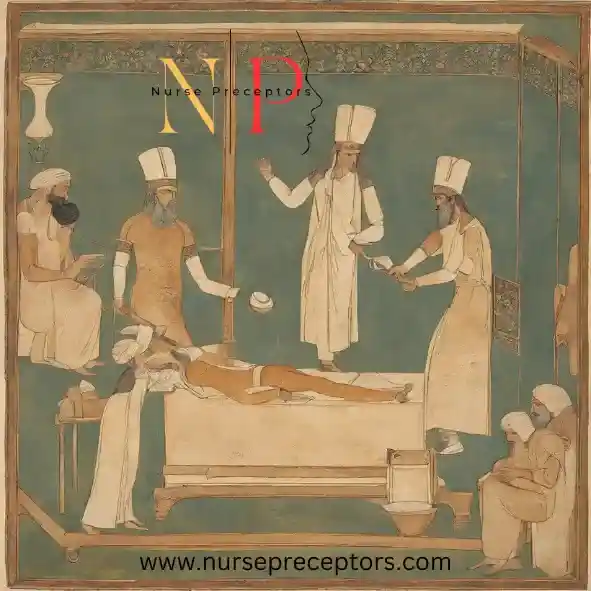
They also emphasized the importance of hygiene and cleanliness, with public bathhouses playing a significant role in promoting wellness. The Persian medical text, Canon of Medicine, written by Avicenna, became a renowned source of medical knowledge in Europe during the Middle Ages.
7. What was the healthcare system in Ancient Israel?
Ancient Israel, with its rich religious and cultural heritage, had unique healthcare practices deeply intertwined with its faith. The site of healthcare in ancient Israel involved religious rituals, dietary laws, and the concept of purity.
Hebrew physicians, known as “Rofeh,” combined natural remedies with spiritual practices to promote healing.
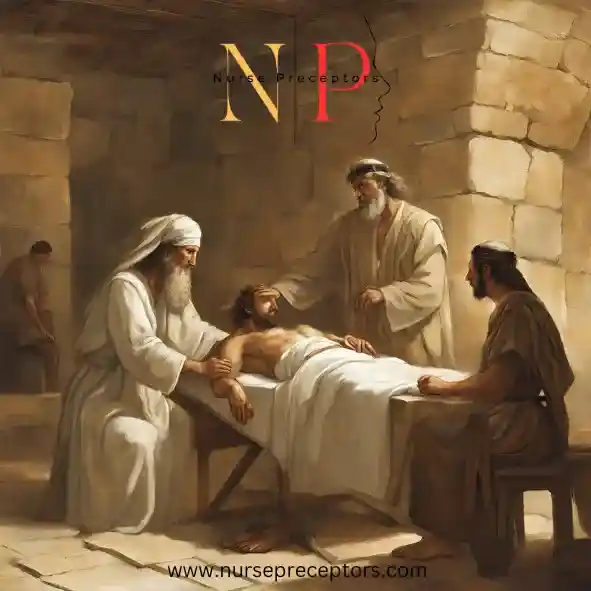
The Old Testament of the Bible contains references to various healthcare practices, including the use of medicinal plants and the importance of cleanliness. The concept of “Shalom,” meaning peace and well-being, was central to ancient Israeli healthcare.
8. Healthcare practices in Ancient Arabia
Ancient Arabia, a region known for its cultural diversity and trade routes, had a healthcare system influenced by neighboring civilizations. The site of healthcare in ancient Arabia involved a combination of Bedouin healing traditions, Persian medicine, and the teachings of Greek physicians.
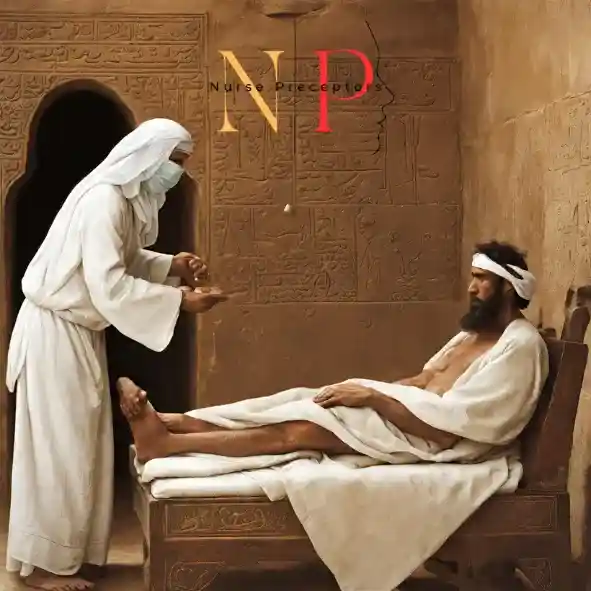
Arabian physicians, known as “Hakims,” used herbal remedies, cupping therapy, and other techniques to treat illnesses. They also emphasized preventive measures, such as maintaining a healthy diet and lifestyle.
The advancements in healthcare practices in ancient Arabia laid the foundation for the later development of Islamic medicine.
9. Healthcare practices in the ancient Mayan civilization
The ancient Mayan civilization, located in present-day Central America, had a unique approach to healthcare. The site of healthcare in ancient Mayan civilization was deeply rooted in religious beliefs and the concept of balance within the body and the natural world.
Mayan healers, called “ajq’ijab,” used a combination of herbal medicine, ritual ceremonies, and divination to diagnose and treat illnesses. They believed that diseases could be caused by spiritual imbalances or supernatural forces.
The Mayans also had extensive knowledge of medicinal plants, which they used for various ailments.
10. The site of healthcare in ancient Aztec civilization
The ancient Aztec civilization, known for its vast empire in Mesoamerica, had a well-developed healthcare system. The site of healthcare in ancient Aztec civilization incorporated a combination of natural remedies, spiritual practices, and surgical techniques.
Aztec physicians, known as “Tepatiani,” used medicinal plants, acupuncture, and bloodletting to treat illnesses. They also believed in the power of ritual ceremonies and prayer for healing.
The Aztecs had specialized medical institutions, such as the “Calmecac,” where physicians received formal training. The preservation and dissemination of medical knowledge were highly valued in Aztec society.
11. Healthcare practices in Ancient America
Native American healing is deeply rooted in spiritual beliefs and the connection between humans and nature. Native American healers were also known as medicine men or women; they used a combination of rituals, herbs, and ceremonies to restore balance and harmony within the individual and the community.
They believed that illness is often caused by imbalances in the body, mind, and spirit, and their healing practices aimed to address these imbalances.
One of the most well-known Native American healing rituals is the sweat lodge ceremony. This ceremony involves entering a small, enclosed structure where hot stones are placed in the center.
Water is poured over the stones, creating steam that purifies the body and mind. The heat and humidity of the sweat lodge are believed to cleanse toxins from the body and promote healing.
Other healing practices used by American healers include smudging with sacred herbs, such as sage, and the use of medicinal plants for various ailments.
12. African medicinal herbs and healing practices
Africa is a continent rich in biodiversity, and its ancient healing practices draw on the abundance of medicinal herbs and plants found in the region.
African healers, often referred to as traditional healers or “Sangomas,” have a deep connection to the natural world and believe that illness is caused by a disruption in the balance between humans and their environment.
Medicinal herbs play a crucial role in African healing practices. These herbs are used in various forms, including teas, poultices, and tinctures, to address specific ailments.
For example, the African herb Rooibos is known for its antioxidant properties and is used to promote overall health and well-being. African healers also incorporated rituals and ceremonies into their practices, using dance, music, and spiritual beliefs to facilitate healing.
The benefits of ancient healing practices
Ancient healing practices offered numerous benefits for individuals and communities.
Comparisons and similarities between ancient healthcare practices
Although each ancient civilization had its unique healthcare practices, there are notable similarities and comparisons between them. Many ancient cultures recognized the importance of a holistic approach to health, focusing on the balance of mind, body, and spirit.
Herbal medicine and natural remedies were common across different civilizations, as were practices such as acupuncture, surgical techniques, and dietary recommendations.
Furthermore, the concept of preventive medicine and the promotion of hygiene and cleanliness were shared values among ancient cultures.
Conclusion
In conclusion, the exploration of healthcare in ancient cultures has provided valuable insights into the practices and beliefs surrounding wellness and healing in the past.
Through the examination of archaeological remains, medical texts, and historical records, we have been able to gain a deeper understanding of how ancient civilizations approached healthcare.
One of the major aspects of the ancient healing practices was diversity, from the use of herbal remedies and dietary treatments in ancient China to the surgical techniques and medical knowledge of ancient Egypt, each civilization had its unique approach to healthcare.
This highlights the rich and varied history of medicine and reminds us that there is no one-size-fits-all solution when it comes to healthcare.
Another important aspect was the role of spirituality and religion in ancient healthcare. Many ancient cultures believed that illness was caused by supernatural forces or imbalances in the body’s energy.
As a result, healing often involved rituals, prayers, and offerings to appease the gods or restore harmony within the individual. This spiritual aspect of healthcare highlights the interconnectedness between physical, mental, and spiritual well-being in ancient cultures.
Ancient healthcare was not limited to treating physical ailments. Mental health was also an important aspect of well-being in many ancient cultures. Practices such as meditation, yoga, and acupuncture were used to promote mental clarity and emotional balance. This holistic approach to healthcare is something that we can still learn from today.
References:
- Ellis, J.R. and Hartley, C.L. (2012) Nursing in today’s World: Trends, issues & management. Philadelphia: Wolters Kluwer Health/Lippincott Williams & Wilkins.
- Berman, A. et al. (2016) Kozier & Erb’s fundamentals of nursing: Concepts, process, and Practice. Pearson Education: Harlow.
- DeLaune, S.C. and Ladner, P.K. (2011) Fundamentals of Nursing: Standards & Practice. Clifton Park, NY: Delmar Cengage Learning.
- Potter, P.A. et al. (2019) Essentials for nursing practice. St. Louis, MO: Elsevier.
- Metwaly, A.M. et al. (2021) Traditional ancient egyptian medicine: A Review, Saudi journal of biological sciences. Available at: https://www.ncbi.nlm.nih.gov/pmc/articles/PMC8459052/#:~:text=There%20was%20a%20hierarchy%20of,the%20existence%20of%20women%20physicians
- Allan, N. (2001) The physician in ancient Israel: His status and function, Medical history. Available at: https://www.ncbi.nlm.nih.gov/pmc/articles/PMC1044389/
- Verhaagen, M.H. (1970) Ajq’ijab, Utrecht University Student Theses Repository Home. Available at: https://studenttheses.uu.nl/handle/20.500.12932/7642
- The historical origins of the basic concepts of health promotion and education: the role of ancient Greek philosophy and medicine (no date) Academic.oup.com. Available at: https://academic.oup.com/heapro/article/24/2/185/568653
- Hospitals And Treatment Facilities In The Ancient World (2023) Encyclopedia.com. Available at: https://www.encyclopedia.com/science/encyclopedias-almanacs-transcripts-and-maps/hospitals-and-treatment-facilities-ancient-world
- Tipton, C.M. (2014) ‘The history of “Exercise is medicine” in ancient civilizations’, Advances in Physiology Education, 38(2), pp. 109–117. doi:10.1152/advan.00136.2013.